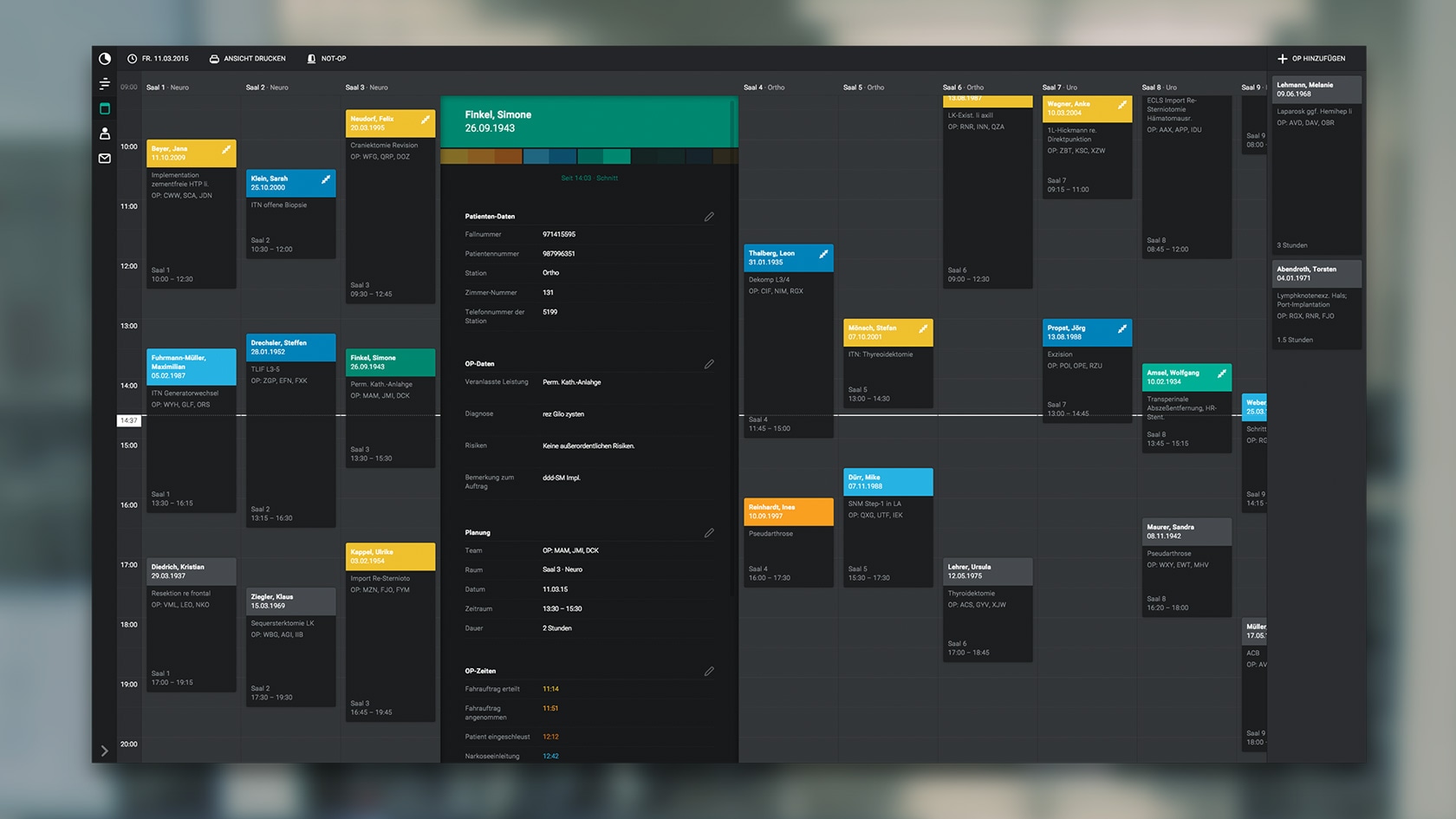
OPMS is an interface for managing a hospital’s surgery department.

Introduction
We redesigned the power-user interface used to manage the surgery department of a hospital. Filled with vast amounts of data it is used to make sure that surgeons, anesthetists, nurses, patients and lots of equipment are at the right place at the right time. It needs to function reliably and consistently, making common interactions as fast as possible, but also work well when unexpected complications occur.
We visited a hospital and spoke with the actual users. Based on their daily workflow and needs we created a completely new interface, with a mental model, structure and visual design suited for their work environment.
Goals
Keep all the data at the user’s fingertips, yet help them focus on what is really important. Prevent human-error in a high-pressure situation, but don’t obstruct the user.
Challenges
Designing for expert users that are going to use an interface for eight hours a day for years and that feel obstructed by technology, rather than empowered requires great listening skills and lots of empathy.
What I learned
Visiting the users in their actual work environment, rather than just talk on the phone is invaluable. Talking with all stakeholders involved – not just the final users – delivers great insights.
The screens on this page are from the prototype we built. If you would like me to give you a personal walkthrough with the actual prototype via Skype I’d be happy to do that! Just let me know.
Overview & Planning
The plan for the day is presented as a calendar view, giving an overview of what is going on in the entire surgery department. The interface is designed to be easy on the eyes and clear about timeframes, states and relationships.
Detail View
In the detail view the entire data of one surgery is shown and can be edited. The most important part is the colored bar at the top, where the user can manually trigger the next state.
State Overview
A bar chart that shows the state of the surgeries in all theaters is one of the most important tools for the team. It is used in daily meetings to predict which surgeries have to be delayed.
Adding a surgery
Instead of the chaotic and irreversible process that users had to follow to add a new surgery before, the new process is linear but allows them to jump back to previous steps at any time.
Process

To get to know the real users’ workflow we spent two days with the surgery management team of the clinic in Tübingen. They are responsible for one of Germany’s largest surgery centers and explained their tasks and needs to us in detail.
We learned a lot by analyzing what the current interface does wrong: it uses scrollable tables to represent surgeries. All the data of one surgery is spread across several screens in no logical order and without hierarchy.
There was no need for the interface to be intuitive to use for first-timers – it’s meant for pro-users with lots of experience, who wish for flexibility and speed. At the same time, it is supposed to stop human errors from happening by making smart suggestions. Because of this, we set on the following goal: The user is guided and supported but not constrained or patronized.
After our intense research we followed a pretty standard waterfall process: From the information architecture, via wireframes and visual design to a high-fidelity prototype built with web technologies.
My Role
My focus in this project was on user research, process design and prototyping.
Meta
This is a student project created during summer semester 2014 as part of a course in Interface Design by Thomas Techert.